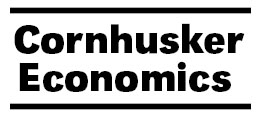Agricultural Economics, Department of

Cornhusker Economics
Date of this Version
June 2001
Document Type
Newsletter Issue
Citation
Cornhusker Economics
Abstract
Perhaps it is the best one could hope for from a government directed by a President selected without a plurality of the popular vote, a closely divided House of Representatives, and a Senate whose majority party is in the process of changing for the third time in 6 months. In any case, the Senate and House have agreed on, and the President will soon sign the first major federal tax reduction bill since 1981. What a difference two decades make! The tax reductions and the massive restructuring of the tax system that were passed in the Reagan revolution of 1981 were almost universally made retroactive to January 1, 1981. Most of the real changes passed in the 2001 tax bill do not become effective until 2005, and many do not become effective until 2010. To further hedge its commitment to tax relief, Congress added a provision that “sunsets” parts of the bill out of existence after 2010, unless reaffirmed by a future Congress and signed by a future President. In any case, we will now look at some of the provisions of the bill, and when they are scheduled to go into effect.


Comments
Published in Cornhusker Economics. June 6, 2001. Produced by the Cooperative Extension, Institute of Agriculture and Natural Resources, Department of Agricultural Economics, University of Nebraska-Lincoln .